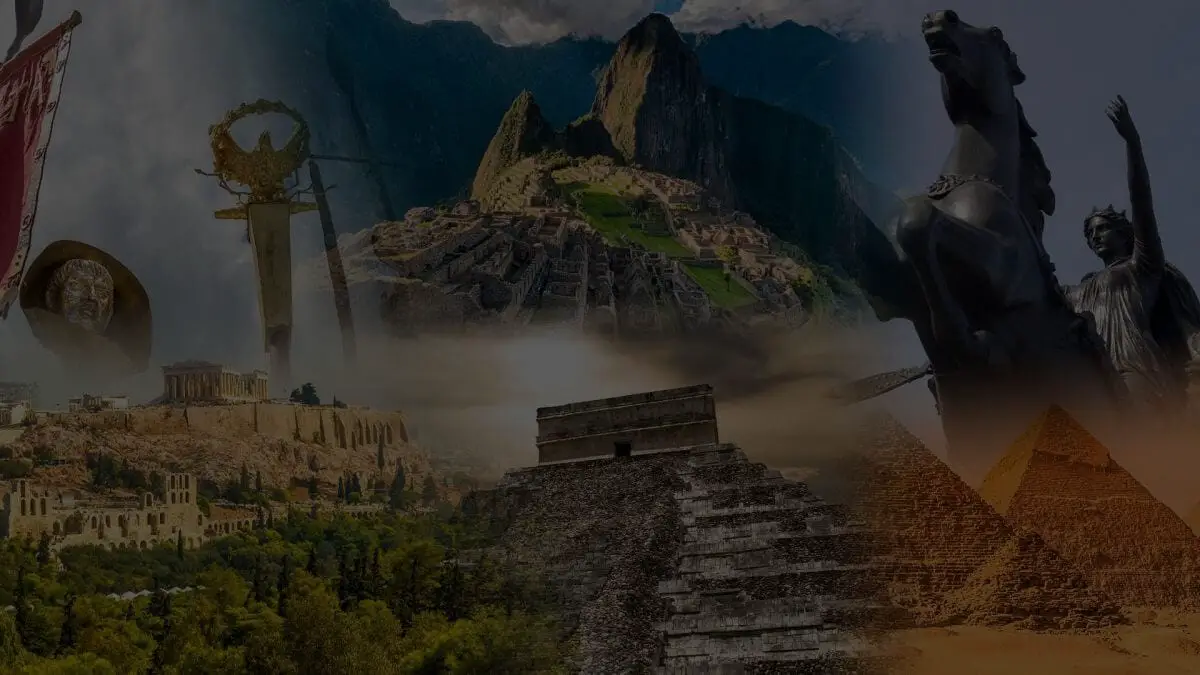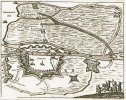57. Fighting, funerals and “all that jazz”
“A good general must know that his men and horses need food and rest”
Genghis Khan
“War is much too serious a thing to be left to military men.”
Talleyrand
«Есть много богачей, которых смерть одна к чему- нибудь годна»
И. Крылов [1]
“The supreme art of war is to subdue the enemy without fighting.”
Sun Tzu
“
Так вы мира желаете? — спросил ландаман. — Торговать хотите?
В голосе его слышалось удивление, видно, никак он не ожидал от закоренелого солдафона, каким считал Волкова, разумных требований мудрого правителя.
— Не всё мне мечом проживать, если сосед честный и не заносчивый, можно и с торговли жить, — спокойно отвечал кавалер. — Тем более, что и вам это будет выгодно.”
Excerpt From Инквизитор. Башмаки на флагах. Борис Конофальский [2]
By the late December of 1712 everybody was
seemingly resigned to the idea of giving the armies some rest for the next few months but what everybody else is thinking usually meant little for King Charles. Shortage of the horses and ammunition were …er… objective factors, especially the horses because shortage of a gunpowder and cannonballs could be compensated by the Swedish bayonets. These two problems would have to be addressed immediately and with all possible efforts. At least for a while the ammunition problem can be resolved by taking “extra” supplies from the now safe Stralsund, Wismar and Stettin and even from the few Swedish warships which stuck in Stralsund for a winter.
Confiscation of the horses had been going on in Mecklenburg and some had been purchased in Germany through Hamburg: silly as it may sound, the citizens of that city had been unhappy with King Frederick IV [3] and, after burning of Altona tended to consider Charles as a kind of God’s hand delivering the Divine Justice.
[
Short interlude to explain situation with Mecklenburg.
Probably it is fair to say that the only time when the area enjoyed a good administration was a brief period when its was ruled by Wallenstein.
Formally, there were two duchies, Mecklenburg-Shwerin and Mecklenburg-Strelutz, each with its own duke. Each duchy had representation in the imperial Bundesrat. However, on most of the issues the duchies had to act as a single entity and the Estates (dominated by the nobility) had an absolute right to define the taxation. It should come as no surprise that as a result Magdeburg had no army worth mentioning [4] and, even when it was maintaining a neutral status, it was routinely occupied during the regional wars.
In OTL the Duke of Mecklenburg-Shwerin, Charles Leopold, tried to prevent a foreign occupation during the GNW by raising an army. An idea of raising the taxes had been rejected by the Estates who complained to the Emperor. As a result, Charles VI issued imperial execution and a big part of the duchy was occupied by Hanover and Prussia and the duke himself was expelled and replaced by his younger brother.
In this TL the timetables are moved a little bit ahead of the OTL schedule: in 1712 Charles Leopold os already a duke and already trying to increase his power at the Estates’ expense. As in OTL, he had chance to participate in the campaign of Charles XII but, unlike OTL, his is not going to marry Catherine Ivanovna because she is already married to Charles. Both Charles and Peter are considering him a friendly “power” and interested in making him a meaningful ruler as a part of the “Baltic Mafia” schema. Which, of course, does not prevent Charles from doing all necessary confiscations on his territory.
To provide the ongoing looting with some political meaning, let’s say that most of the confiscations are happening from the nobility estates. 😜
]
As soon as his army got enough horses, gunpowder and other shooting necessities, Charles marched 20,000 troops to the North into Holstein and then Schleswig. While prior to that the Danes had been destroying the ducal lands, now he was doing the same to the royal lands (and, of course, the lands of the “imperial knights” and other semi-independent entities suspected in the pro-Danish sentiments). The soldiers were not extremely happy with fighting during the cold winter but Charles had a firmly set opinion that if he personally is suffering inconveniences, then his subordinates should not complain. After Gottorp was taken and the whole Schleswig cleaned from the Danish troops (not that there were too many), Charles marched up Jutland, ravaging the countryside, until he reached Fredericia. Here he finally had to stop by a very prosaic reason: besieging a well-fortified city with a strong garrison without having a siege artillery was a little bit too much even for him.

After sending few looting parties around to provide his army with the food and fodder, he turned back South toward Schleswig in the late February of 1713 thus finally ending the winter campaign.
In Gottorp he received a message that his “dear brother” Peter arrived to Stettin and few days later that some other important event just happened…
Coalition is cracking…
Starting from February 25 there was a new King in Prussia, Frederick Wilhem I, and this meant a lot because the only thing that a new king had in common with his father was his love of an army but even then, while for Frederick I the army was just an instrument for his ambitious plans, his son was a true martinet and loved an army as a matter of principle. His other obsession was, putting things to order and cutting expenses so as his first act he abolished most of the court positions and cut the court expenses to one forth of those of his father. Between this act and the next one, revision of the revision of Berlin’s financial department, which he ordered on March 5 [5], FWI sent messages to Peter and Charles with the offer to start peace talks.
Charles, being busy planning a revenge campaign against Hanover and a summer campaign against Denmark, initially did not pay an attention [6] but Peter jumped to the opportunity by more than one reason:
1st, he did not have any specific reason to be hostile toward Prussia outside of what was required by his allied & family obligations.
2nd, he did not expect to get any advantages for Russia out of war with Prussia and already controlled the territory in Pomerania which was lost by Sweden in 1679 and which Charles could legitimately want back. Memel was delivered to the Swedes early in the war, the Russian navy helped to win a victory over the Danes and to relieve Stettin from the siege so there was no reason for Charles to say that Peter neglected his moral obligations.
3rd, the war cost money and even thoroughly defeated coalition members could not pay more than they realistically could so he was probably already fighting at his own expense and there were other areas in which he could spend money with a greater return on investment.
4th, strictly speaking, if FWI proves to be a reasonable ruler and not a megalomaniac like his father, Prussia as it is may become an useful member of the Baltic Mafia guaranteeing almost a complete coverage of the Eastern Baltic coast. Clearly it couldi keep Mecklenburg under control and if necessary get pieces of it.
5th, Prussia may be pretty useful in controlling Saxony because the Favorite Pet already started not quite clear game with Charles VI and so far proved to be quite useless in the ongoing war.
6. With the arrangement, the Baltic region is going to be completely out of the Hapsburg reach except for some formal imperial decrees and protests which could be simply ignored.
7. In a short-term, Prussia switching the sides, would be a very serious blow to the coalition. Immediately, against Brunswick-Luneburg to help Charles to return Bremen-Verden and then, if need arises, invading Oldenburg .
8. Russian army and navy already scored on “European theater” in a rather convincing way firmly establishing reputation of a newly-proclaimed empire as a Great Power.
So Peter wrote to FWI offering to discuss the issues at a personal meeting on a neutral territory, for example in Gustrow. To Charles he sent a message regarding the planned meeting inviting to join or, if he (hopefully) otherwise busy, to sent Count Piper or some other trusted person of his choice. In any case he promised to keep Charles updated regarding the ongoing developments.
In March 15 two monarchs met each other (with Piper as Charles’ representative) and the meeting went quite well: both of them had been naturally bad-mannered, liked the soldiers food (and humor) and had been the heavy smokers. It took only a couple days to outline the general framework of the agreement after which Golitsyn, Piper and von Ilgen ironed down the details. Agreement was rather simple:
(a) Prussia returns to Sweden the land lost in 1679 [7] and cedes Memel. Prussia also gives to the Great Duchy of Lithuania a strip of land on the right bank of the Nieman down to its delta with the fishing rights in a Curonian lagoon. However, Prussia retains the Curonian Split. Prussia also pays Sweden 200,000 thalers as a compensation for the losses suffered by Swedish Pomerania.
(b) Prussia is paying Russia an indemnity of 1,000,000 thalers (which can be, by a mutual agreement, partially paid by the objects of art).
(c) Prussia joins the Swedish-Russian alliance and, upon request, may provide services of its army. The details have to be discussed when and if the need arises.
(d) Prussia joins Russia and Sweden in their arrangement regarding the exports.
(e) All prisoners are let free without extra payments.
__________________
[1] “There are many rich people who are doing something good only by dying” Ivan Krylov
[2] “- So you want a peace? - asked the Landman - You want trade?
There was a surprise in his voice, obviously he did not expect from an ingrained martinet like Volkov the reasonable demands of a wise ruler.
- Living by a sword is not the only way for me, I can live by trade if a neighbor is honest and not arrogant - calmly answered the cavalier - Especially taking into an account that you’ll benefit from it as well.”
Inquisitor. Shoes on the flags by Boris Konofalsky
[3] What do you expect from the burghers forced to pay huge amounts of money under the invented pretext? While Frederick IV was on a side opposite to the newly-established Baltic Mafia, his methods were the same.
[4] I found only reference to the Guards company which was disbanded in 1701 and whatever else is mentioned, is dated by the 1740s or later. Probably there was
something prior to that time but even the mid-XVIII combined “armies” of both duchies amounted to something in the range of 2,000-2,500.
[5] Well, actually he kept selling his father’s horses and collections but this was a continued process rather than a single act. 😉
[6] He expected that more or less by default Peter will continue to attend to the Prussian issues while he keeps dealing with other coalition members.
[7] On a map in the previous chapter, a narrow greenish-yellow



